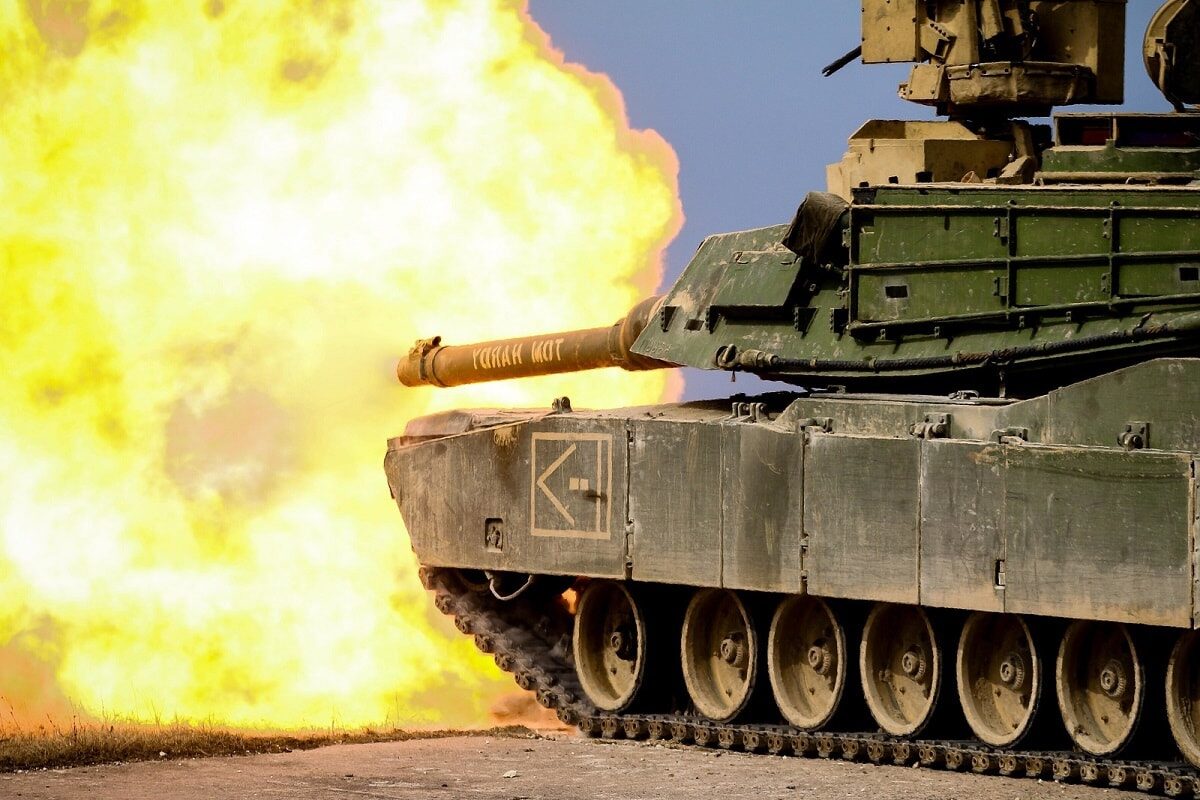While many pieces of military equipment within the U.S. arsenal have been replaced by new technologies, the Army’s M1- Abrams Main Battle Tank (MBT) has only required upgrades over the years to stay relevant.
(Subscribe to Our YouTube Channel Here. Check out More 19FortyFive Videos Here)
This powerhouse of a tank has remained in service for over four decades and is widely considered one of the most formidable vehicles on the planet. The M1 Abrams is also battle-tested as it saw combat in America’s initial invasion of Iraq in 2003 and in Afghanistan’s Helmand Province in 2010.
Three main variants of the Abrams exist, although each variant has a large number of sub-variants that make the MBT a versatile vehicle.
The newest M1A2 SEPv4 variant has been under development since March and will embody the most lethal tank in the Abrams family to date.
A short history of the M1 Abrams
The American-made battle tank was designed by Chrysler Defense (currently General Dynamics Land Systems) in the 1970s to replace the aging M60 Patton and first entered service in 1980. The first prototype featured license-built versions for the 105mm Royal Ordnance L7 gun, followed by the production of 6,000 tanks that were equipped with improved armor and a chemical, biological, radiological, and nuclear defense (CBRN) protection system.
The M1A1 variant of the Abrams was closely followed by the M1A2 variant in 1990, which showcased a revised weapon station for the tank commander among other enhancements.
The M1A2 variant is adorned with a 120mm XM256 Smooth Bore Cannon, a 7.62 M240 coaxial machine gun, and a .5 caliber M2 machine gun. Military.com states that “the most notable exterior changes on the M1A2 are the redesigned Commander’s Weapon Station (CWS) and the addition of a Commander’s Independent Thermal Viewer) on the left side of the turret forward of the loader’s hatch. Internally, however, the M1A2 has been radically redesigned to take advantage of newer technology.”
The M1 Abrams’ excellent track record in combat
The M1A1 Abrams first saw combat in 1991 during the Persian Gulf War, where it countered Soviet-era T-55 and T-62 battle tanks for nearly seven months. The Abrams performed extraordinarily well in this conflict – only 23 vehicles out of 1,849 were damaged and not a single tank was destroyed by enemy fire. While the Abrams did suffer several casualties in Iraq following the U.S. invasion, the battle tank overall proved to be a critical asset for the Army and Marine Corps.
Introducing the M1A2 Sep4
The latest version of the Abrams will only enhance America’s abilities in combat. In early 2021, General Dynamics Land Systems was granted a $25 million contract to integrate new training software and cybersecurity upgrades to the newest M1 Abrams variant. The SepV4 variant is an enhanced model of the M1A2 Sepv3, which is also under the purview of General Dynamics Land Systems.
According to the U.S. Army, the M1A2 Sepv4 will enable tank crews to identify enemy targets from farther away than ever before and will serve as the branch’s most “lethal” Abrams tank.
The Army added that “The 3GEN FLIR will be an upgrade to both sights and will be common with other combat platforms. With the upgrade, the Abrams will integrate a color camera, Eye-safe Laser Range Finder, and a cross-platform laser pointer to facilitate multi-domain battle into the commander’s sight.” Additionally, the newest variant will feature a digital data link able to communicate with the tank’s reprogrammable XM1147 Advanced Multi-Purpose (AMP) round for the vehicle’s main gun, according to The Drive.
Why tanks still matter
Considering the extensive use of battle tanks in Russia’s ongoing invasion of Ukraine, developing newer and better-armored vehicles remains a significant endeavor. Moscow has lost at least 1,700 tanks in the conflict to date and has been forced to rely on its rapidly aging Soviet-era fleet of tanks in its war efforts.
While the M1 Abrams is arguably already a superior platform to many of its near-peers, the new M1A2 Sepv4 variant will represent the mainstay of the U.S. Army’s armored corps for years to come.
More: MAGA Needs To Move on From Donald Trump
More: Would Putin Dare Use Nuclear Weapons in Ukraine?
More: Putin’s War Machine Won’t Fight in Ukraine?
Maya Carlin is a Middle East Defense Editor with 19FortyFive. She is also an analyst with the Center for Security Policy and a former Anna Sobol Levy Fellow at IDC Herzliya in Israel. She has by-lines in many publications, including The National Interest, Jerusalem Post, and Times of Israel.

